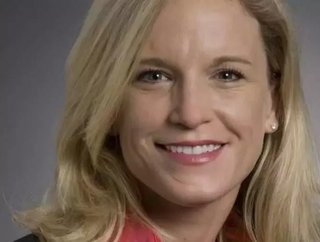Caterpillar appoints first female to top ranks

Caterpillar Inc., the world’s largest equipment manufacturer, has announced it has elected Denise Johnson as group president of Resources Industries, replacing retiring Group President Ed Rapp.
Johnson, previously vice president with responsibility for the Material Handling & Underground Division, is the first woman to reach the group president level in the history of Caterpillar’s existence.
“Denise leads one of the largest and most complex businesses in the company; her division makes products primarily for the mining, waste and construction industries and employs about 8,000 people in 14 locations spanning four continents. She has successfully managed costs during the mining downturn and been deeply involved in restructuring within Resource Industries, all while gaining market position for multiple products in her portfolio. Denise has accomplished these business results while also delivering outstanding safety and quality metrics,” Caterpillar Chairman and CEO Doug Oberhelman said in a press release.
• Related: Women in Mining and the Organizations Empowering Them
“Above all, Denise is a leader inside and outside of Caterpillar. Whether she’s engaging with employees, strengthening relationships with key mining customers or serving as a strong role model to recruit more female engineers, Denise consistently excels.”
Joining Caterpillar in 2011, Johnson previously spent 22 years with General Motors, where she built deep expertise in operation and product management in a series of positions in the U.S., Canada and Brazil. Johnson graduated from Michigan State University with a bachelor's degree in mechanical engineering. She earned dual master's degrees in mechanical engineering and business administration from the Massachusetts Institute of Technology. Johnson is a member of numerous outside boards including The Mosaic Company.
According to the Wall Street Journal, of the 35 executives listed on Caterpillar’s organizational chart, seven are women. Two of the company’s 12 directors are women.
“Caterpillar as a company wants to be on the leading edge of diversity and we have a number of initiatives to ensure we continue on that path,” said Johnson.
In December 2015, Ed Rapp, a 36-plus-year veteran of Caterpillar, announced his retirement due to ALS.
"Early retirement was not part of my plan," Rapp said. "But I have recently been diagnosed with ALS – better known as Lou Gehrig'sdisease – a disease that currently has no known cure. My decision to leave Caterpillar and its people was the toughest choice I have ever faced. I love Caterpillar, especially the people I get to work with at all levels of the company, including dealers, suppliers and customers. But, I have a new challenge in front of me, and along with my family, I will now turn my focus and attention to the next chapter in life, which will include fighting the disease, raising awareness and supporting those in search of a cure."
Stay connected! Follow us on Twitter and like us on Facebook






